TechnoSat
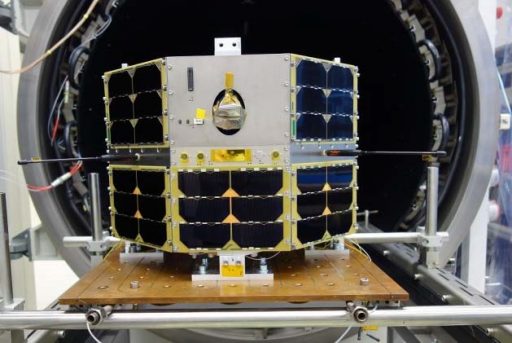
TechnoSat is a microsatellite mission of the Technical University of Berlin to demonstrate a number of newly developed satellite components in an operational mission setting. The 18-Kilogram satellite employs the TUBiX20 satellite platform developed at TU Berlin using experience from the BeeSat CubeSat projects and the mission will test a number of innovative components for future flight opportunities.
A total of seven payloads / tech demonstrations are part of the mission to test out new camera systems, a fluiddynamic actuator system, new S-Band transmitter, laser retroreflectors, a Solar Generator Impact Detector, an advanced Star Tracker and a small satellite Reaction Wheel system. The project is funded by the Federal Ministry for Economic Affairs and Energy (BMWi) through the German Aerospace Center.
TUBiX20 (TU Berlin innovative neXt generation 20 kg nanosatellite platform) leverages 25 years of satellite development at TU Berlin to create a cost-effective small satellite platform that can be easily adopted for a variety of missions, payloads and operational orbits. TUBiX will also be available in a ‘light’ version for 10kg nano satellites.
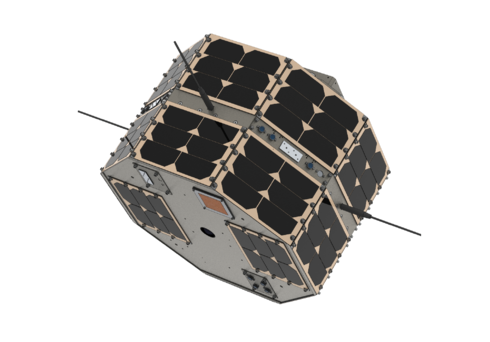
The platform can be easily customized to facilitate differently sized payloads and power requirements can be catered to by adding solar cells. Overall, the platform employs a one-failure tolerant system with different cold and hot redundancies to create a robust design capable of extended operation in space. Attitude control can also be customized based on mission needs ranging from a coarse system relying on magnetic torquers alone to highly precise pointing systems with a 10arcmin accuracy.
The TUBiX platform employs nodes building the different system level components with at least four nodes required for the satellite to function – an Electrical Power System Node, Communications Node, Onboard Computer Node and Attitude Node; all are interconnected with a redundant data bus and power is delivered via a redundant power bus.
TUBiX employs an octagonal structure comprising two primary parts – four outer frames provide overall structural support and load transfer, three platforms build the upper and lower spacecraft panel as well as an internal separator for mounting of subsystem components. The TechnoSat spacecraft is 46.5 by 46.0 by 30.5 centimeters in size and uses a simplified architecture with coarse attitude control solely delivered by magnetic torquers.
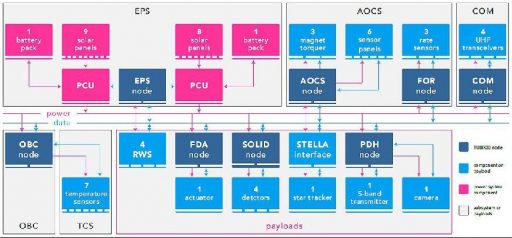
Body-mounted solar cells are used for power generation with two strings of 8 and 9 solar panels (each with 6 cells) that provide an orbit-average power of 16 Watts. Each of the two independent power strings has its own PCU (Power Conditioning Unit) and battery pack making up the EPS subsystem node. EPS also serves as a monitor for the overall spacecraft performance and controls the various redundancies in the other nodes, itself operating in a hot-redundancy mode.
Attitude determination is accomplished with three-axis magnetometers, MEMS gyros and sun sensors plus an independent Fiber Optic Gyro unit that delivers high accuracy rate measurements. Three torque rods, controlled by the ADCS node, are used for three-axis stabilization with an overall pointing knowledge of 15° and a pointing accuracy of 20° since the mission does not require high accuracy in pointing.
The onboard computer is in charge of controlling all satellite subsystems based on ground command sequences and accepts housekeeping telemetry and payload data for downlink to the ground via a UHF terminal with four redundant transceiver units. The OBC software is based on a realtime operating system specifically designed for application on small satellite missions.
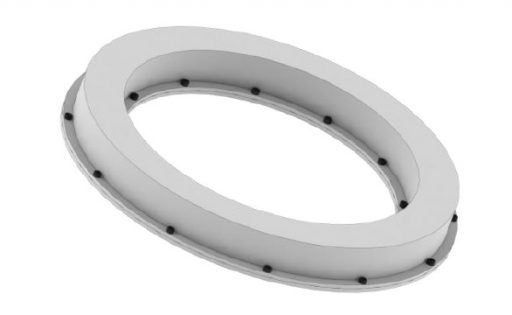
The FDA (Fluid Dynamic Actuator) is an innovative attitude control actuator suitable for small satellite missions, comprising a closed ring structure containing a liquid metal and an electromagnetic pump that accelerates the metal within the ring to store angular momentum – working on the same principles as a reaction wheel but replacing the rotating inertial mass of the wheel with a rotating liquid phase.
The 30-centimeter diameter ring is filled with Galinstan – an eutectic mixture of Gallium, Indium and Tin with a DC conduction pump in charge of accelerating the liquid. One challenge of a system such as this is the measurement of the angular momentum (for reaction wheels, angular velocity can be easily measured through motor currents and hall sensors). In case of FDA, a MEMS gyro is used to measure the angular rate of the entire satellite and reverse voltage of the DC pump is measured to determine the currently conserved momentum.
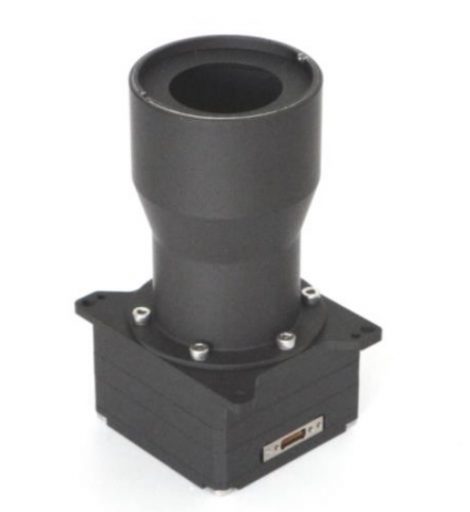
The FDA validation experiment uses only a single axis system around the satellite’s roll axis; an enclosing frame structure around the ring provides protection in the event of a breach of the primary fluid container. Per the requirements of the test mission, FDA’s primary objective is a successful in-orbit commissioning and desired secondary objectives are testing the system’s attitude control and nutation damping capabilities. All in all, FDA weighs 1.1 Kilograms and has a momentum capacity of 25 mNms and a maximum torque of 20 mNm.
STELLA is a miniature star tracker developed for application on small satellite missions that are typically constrained by available volume and power availability. The star tracker, developed at the University of Würzburg, weighs only 167 grams and is 9.1 by 4.6 by 5.8 centimeters in size with an average power draw of 275 milliwatts – making it perfectly suitable for application on a nano satellite.
Although of small size, Stella delivers precise pointing knowledge with an accuracy of 0.01 degrees around the pitch and yaw axes and 0.04 degrees around the roll axis. The optical head has a field of view of 14.3-degrees and captures four images per second that are compared with an onboard star catalog to calculate the precise three-axis attitude of the satellite. Stella will initially only capture data for performance analysis but the TechnoSat mission design plans to put the star tracker into the active attitude control loop after its performance is proven.
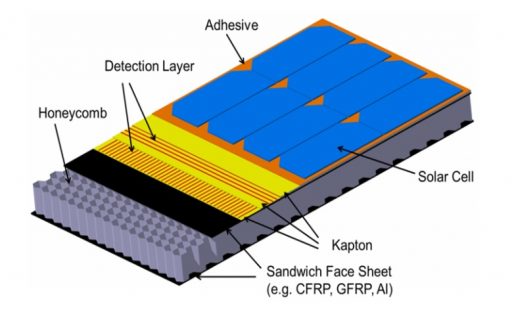
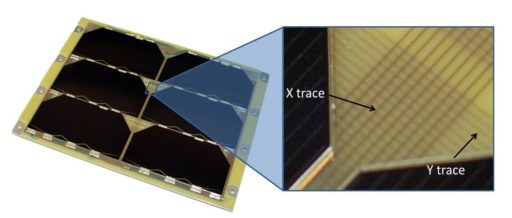
SOLID – the Solar Generator Based Impact Detector is a development of the German Aerospace Center for the measurement of space debris and micrometeoroid objects with a diameter of 70µm and up. The experiment uses four of the satellite’s 17 solar panels that were modified to double as a power generator and impact detector with instrument control and data processing provided by an experimental computer design.
The SOLID concept modifies the insulation layer behind the solar cells, placing two layers of copper lines between the insulation layer and the thin solar cells. The copper layers are aligned in perpendicular directions to form a detection grid.
If a piece of debris impacts, it will cause damage specific to its energy. In case of a penetrating impact into the detection layer, the particle will cut several of the fine copper layers in the detection grid – the number of severed strings and the position of the impact can be identified by the detection electronics and software. The diameter and energy of the impactor will be calculated based on existing ESA models.
Three TU Berlin satellite systems demonstration payloads are flying on TechnoSat: A pico- and nano satellite S-Band transmitter capable of data rates of up to 1Mbit/s; a small reaction wheel assembly with four reaction wheels in tetrahedron configuration to retire risks for future TUBiX missions utilizing the higher-performance attitude control system; and small sized 10mm laser reflectors to demonstrate a laser ranging system for small satellite missions.
